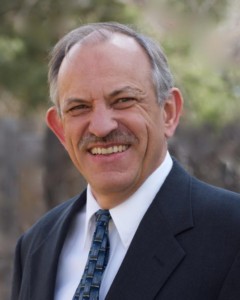About the National Energy Workforce Alliance
The National Clean Energy Workforce Alliance is a cross-sector effort to improve clean energy education, training, and job placement outcomes—and ensure that expanding clean energy job opportunities are inclusive of diverse candidates and underserved communities. Since January 2022, the Alliance has been virtually convening more than 500 employers, training providers, community-based recruitment and support organizations, and energy justice organizations.
Through structured and intentional meetings, the Alliance is collectively identifying and sharing resources and information, with a focus on concrete solutions to shared workforce challenges.
The Alliance is led by the Interstate Renewable Energy Council and the National Council for Workforce Education, with support from Bank of America Charitable Foundation.

The Challenge: Unprecedented Clean Energy Job Growth Is Needed
Ambitious clean energy and climate goals at state and national levels will require significant growth in the clean energy workforce. The Inflation Reduction Act enacted in 2022 is expected to dramatically expand renewable energy deployment, with a corresponding demand for employees.
There are currently 255,000 solar workers in the United States, according to IREC’s National Solar Jobs Census. Industry estimates find the number of workers will need to almost quadruple to reach the Biden Administration’s goal of 100% carbon-free efficiency by 2035. In the energy efficiency sector, which will also need to grow dramatically, 91% of employers recently reported that it was somewhat or very difficult to hire new employees.
This is a tremendous opportunity, but such significant workforce expansion will not happen by chance. It will require comprehensive planning and coordination. This is particularly true if we want to ensure that this unprecedented job growth is inclusive and translates to opportunities and economic gains for communities that need them most.
The Solution: Strategic Coordination, Planning, & Implementation
To build a sufficient pool of highly qualified clean energy workers, national, regional, and local stakeholders will need to take a conscious and strategic approach to clean energy workforce capacity building.
Comprehensive policies and programs will be needed that holistically address clean energy technology, growing industry capacity, and workforce development.
It will also require unprecedented national coordination paired with direct action. Many stakeholders—including employers, trainers, community-based organizations supporting workers and learners, and workforce program designers—will need to coordinate to avoid duplicating efforts, identify and address gaps, and leverage lessons learned from comparable workforce growth in other sectors.
The National Clean Energy Workforce Alliance was developed to address this need.
What Are the Expected Outcomes?
The Alliance will accelerate the development of a diverse and highly skilled workforce through more inclusive and effective recruitment, training, credentialing, and employer placements and retention. Organized by industry cohort, the Alliance will develop processes that make it easier for:
- community organizations to connect learners and workers to clean energy jobs,
- employers to find the employees they need, and
- training providers to support effective learning and career guidance.
The Alliance will identify and broadly distribute specific clean energy workforce development gaps along with recommended solutions that can be addressed through policy and program deployment.
Alliance members benefit from joining a community of practice that connects members to workforce development best practices and existing resources. They also have the opportunity to contribute to the scaling of national solutions.
Who Can Join?
- Training, Education, and Credentialing Providers
- Community and four-year colleges and universities, technical and vocational schools, organized labor, certifying bodies, other for-profit and non-profit providers.
- Employer Recruitment & Retention (Clean Energy Industry)
- Employers and trade associations representing all elements of the clean energy supply chain.
- Providers of Recruitment and Support for Workers/Learners
- Those recruiting and supporting learners and workers, including energy justice organizations, DOL’s workforce system, community action programs, training programs that provide wraparound services (i.e. Job Corps), and other CBOs.
- Funders and Program Designers
- Government (policymakers, regulators, and program designers), foundations, utilities, and other entities funding workforce efforts.
How Do I Get Involved?
The Alliance is an inclusive effort; please get in touch if you are interested in being involved!
Sign up for email updates about the National Clean Energy Workforce Alliance using the form below.
Thank you in advance for joining us in developing more resilient, healthy, and prosperous communities through improved workforce development for clean energy technology and jobs.
Join our LinkedIn group!
Help Shape the Clean Energy Workforce of the Future
Sign up for email updates about the National Clean Energy Workforce Alliance


Larry Sherwood
IREC President/CEOData from the IREC-led National Solar Jobs Census indicates that the U.S. solar workforce will need to nearly quadruple … and similar gains will be needed in other sectors like energy efficiency. While this is a tremendous opportunity, such significant workforce expansion will require strategic coordination of key players across the clean energy landscape. IREC is thrilled to join forces with the National Council for Workforce Education and Bank of America to achieve that.
